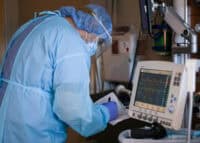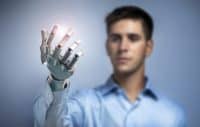
Vaccination rates have risen quickly in the past three weeks. The Biden administration says it will have enough vaccine for all Americans by May 1 and is running ahead of that timetable. At this point, 25% of Americans have received at least one dose and 14% have been fully vaccinated. Nationwide, 164,300,795 doses have been delivered and 128,217,029 shots have been given.
Partially due to the growth in vaccination levels, COVID-19 daily confirmed cases across the United States have begun to slow, but it remains a tremendous danger. The daily growth of confirmed cases has waned to well under 100,000 from an amount much more than twice that three short months ago. New fatal cases per day now run as low as 1,000, which is as much as three quarters lower than the peak. Nevertheless, there have been 30,161,747 confirmed cases so far in America, which is about 25% of the world’s total. Fatal cases in the United States number 549,411, or about 20% of the global number.
There are two challenges to further slowing the spread of the disease. The first is variants, some of which may spread faster than the version that infected most people from last January until recently. The Centers for Disease Control and Prevention (CDC) tracks three of these for the public: the B.1.1.7, B.1.351 and P.1 variants. These variants have been found in all 50 states, and epidemiologists believe that there are many more variants than these three. Public health offices believe that as many as 30% of new cases in the United States are the B.1.1.7 variant.
The other challenge is the so-called opening up of parts of the country. Texas, the second largest state by population is a case in point. The governor has dropped the state’s mask mandate, allowed a renewal of social gatherings and fully opened businesses. News reports across the country showed college students partying, without masks, in Florida. Public health officials worry all this may cause a fourth wave of the disease. In fact, daily confirmed and fatal case rates have started to rise again in some counties and states.
Much of the reported data about COVID-19 covers raw numbers of deaths, recoveries, hospitalizations and confirmed cases. However, these figures do not allow people to compare places with very different population sizes. The solution is to report numbers on a per 100,000 person basis.
Currently, America’s worst hotspot, based on The New York Times analysis of counties with the highest number of recent cases per resident, is Webster County, Nebraska. On average, over the past seven days, it has had 193 cases per 100,000 people.
Webster is in the south-central part of the state, west of Lincoln and Omaha. The U.S. Census Bureau puts its population at 3,487, based on an estimate for July 1, 2019. Ninety-one percent of the county is white. At $46,188, its median income is well below the national average. Its poverty rate of 12.3% is slightly above.
America’s worst hotspot will be somewhere else in a few weeks, or perhaps sooner. In the meantime, Webster is as battered as anywhere else in the United States.
Click here to see the city in each state where COVID-19 is growing the fastest.
Get Ready To Retire (Sponsored)
Start by taking a quick retirement quiz from SmartAsset that will match you with up to 3 financial advisors that serve your area and beyond in 5 minutes, or less.
Each advisor has been vetted by SmartAsset and is held to a fiduciary standard to act in your best interests.
Here’s how it works:
1. Answer SmartAsset advisor match quiz
2. Review your pre-screened matches at your leisure. Check out the advisors’ profiles.
3. Speak with advisors at no cost to you. Have an introductory call on the phone or introduction in person and choose whom to work with in the future
Thank you for reading! Have some feedback for us?
Contact the 24/7 Wall St. editorial team.



